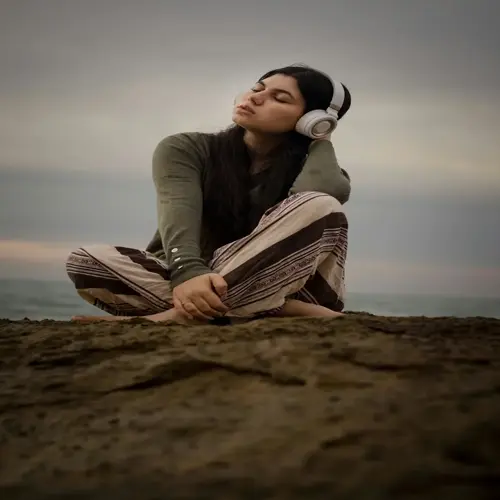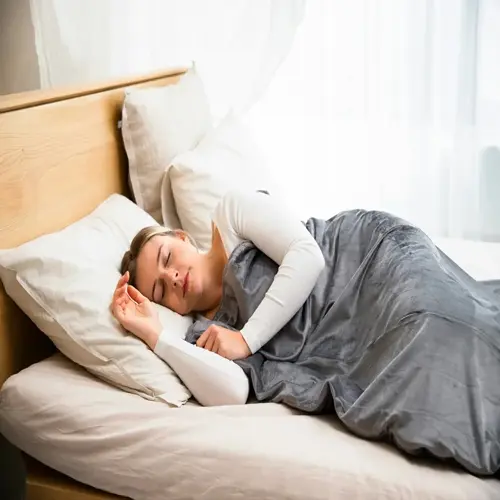Art Therapy Benefits: Transform Your Wellbeing

Written by
David Nelson
Reviewed by
Prof. William Dalton, Ph.D.Benefits of art therapy include stress relief and emotional resilience through creative expression
Non-verbal expression facilitates safe access to emotions in the subconscious without needing verbal skills
Practicing for just 15 minutes each day, such as through gratitude doodling, provides lasting benefits to emotional wellbeing
The process-over-product approach means anyone can access therapeutic arts, regardless of talent
Emotions can be transformed using techniques ranging from drawing to sculpture
Changing the neural pathways enhances cognitive flexibility as well as processing trauma
Article Navigation
The benefits of art therapy stem from a form of psychotherapy that involves creative expression and self-discovery. It allows for feelings to be expressed and processed without necessarily using words. The principle is based more on the healing experience involved, rather than on artistic expression. This can be accomplished through the safe process of creating art to explore feelings. This also allows for the development of self-awareness naturally.
This validated method cultivates your holistic wellbeing by linking mind and body. You learn how to improve stress management and resilience. Research shows how positively wiring your brain through creative actions is effective. I have witnessed clients improve their emotional well-being through simple art activities.
These benefits are available to everyone, regardless of their skill. You do not need prior experience in art. The process is getting there and going through your own insides, rather than focusing on perfection. As a therapist, I lead people to discover their own strengths. You start, however, with simple things like paper and crayons.
Art Therapy Fundamentals
Art therapy is an integrated mental health practice that combines principles of psychology with those of creativity. This helps you express your feelings without words through different media. This approach differs from art as recreation in that it seeks to achieve emotional goals. The therapist provides guidance in each session to help you gain insight into your own growth. The experience becomes meaningful for both the mind and body.
Therapeutic art is not necessarily about creating beautiful works of art. It focuses on what is happening internally for you while the creation takes place. Recreation is about the result. Art therapy is concerned with the journey of self-discovery. You develop your awareness of your own emotions through your sensory engagement with color and texture. This is a safe way to explore your hidden emotions.
The process-over-product philosophy states that the meaning of your process is most important. You do not need artistic talent to gain from it. Every mark on the paper has meaning to you. I urge clients to pay attention to their physical sensations while they work. Awareness opens healthy channels between thoughts and feelings.
Establish therapeutic objectives at the beginning of each session. You can work with topics related to stress or trauma. Your therapist will guide you through your unique process of self-discovery. The materials will serve as tools for communication. I have seen better results through the therapeutic process when the person has learned to trust it. Those who are afraid or skeptical need only do some of the basic exercises, like clay modeling or free drawing.
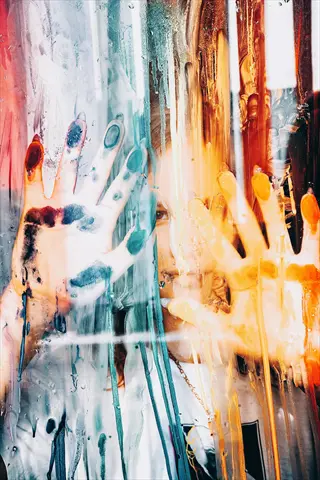
Non-Verbal Expression
- Emotional Channel: Allows communication of feelings that resist verbal description through symbolic visual representations and metaphorical imagery that transcends language limitations
- Subconscious Access: Facilitates exploration of unprocessed memories and thoughts through spontaneous creation without cognitive filtering or self-editing mechanisms interfering
- Universal Language: Bridges communication gaps across diverse cultures and different age groups without requiring specific vocabulary or verbal skills for meaningful expression
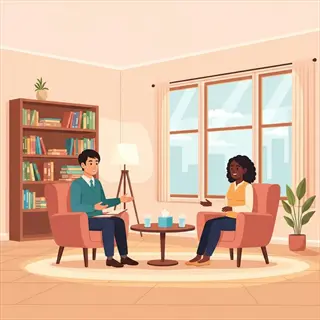
Therapist Guidance
- Structured Safety: Professionals establish psychological boundaries creating safe spaces for emotional risk-taking during creative sessions where vulnerability is supported
- Process Reflection: Guides interpretation of artistic choices and creative decisions to uncover emotional patterns and therapeutic insights emerging from the work
- Goal Alignment: Tailors creative activities to individual therapeutic objectives while systematically tracking progress milestones throughout the healing journey
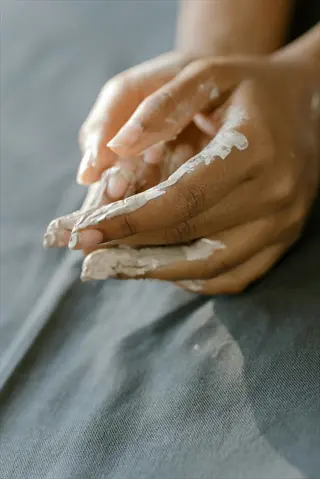
Sensory Engagement
- Material Interaction: Tactile experiences with varied textures like clay and fabrics ground participants in present moment awareness through physical sensations
- Neurological Stimulation: Combining colors, textures and movements activates multiple brain regions simultaneously enhancing cognitive integration and emotional processing
- Mind-Body Connection: Physical manipulation of materials creates embodied understanding of emotional states through kinesthetic experience and sensory feedback loops
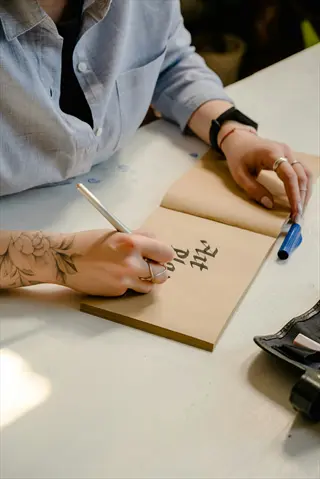
Self-Reflection
- Insight Development: Facilitates understanding personal narratives and life experiences through observation of created symbols and recurring patterns
- Perspective Shifting: Enables viewing challenges from different angles through artistic representation and subsequent reinterpretation of visual elements
- Identity Exploration: Supports discovering personal values and evolving self-concept through creative choices made during therapeutic sessions
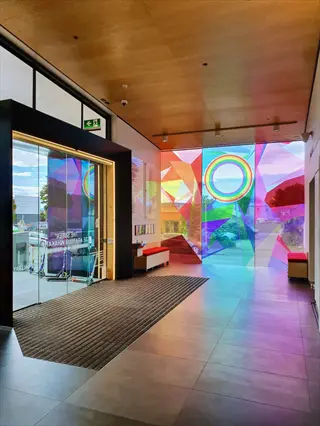
Trauma-Informed Approaches
- Emotional Regulation: Provides structured creative containers for processing difficult experiences at manageable pace with built-in safety mechanisms
- Empowerment Focus: Restores personal agency through deliberate choice of materials and autonomous creative decisions during therapy sessions
- Resilience Building: Develops sustainable coping mechanisms through symbolic resolution and mastery experiences within artistic creations
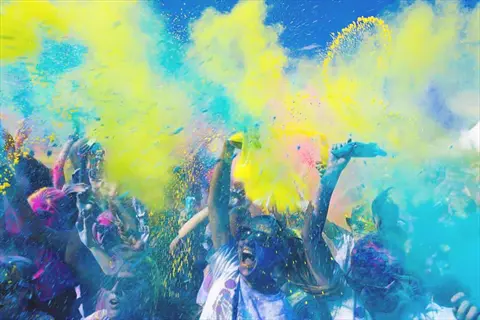
Cultural Sensitivity
- Inclusive Practices: Adapts materials and symbols to respect diverse cultural backgrounds and traditions while honoring individual perspectives
- Symbolic Universality: Leverages cross-cultural visual languages that transcend specific verbal expressions for broader emotional understanding
- Accessibility Focus: Ensures therapeutic approaches function effectively across different cultural understandings of healing and wellbeing
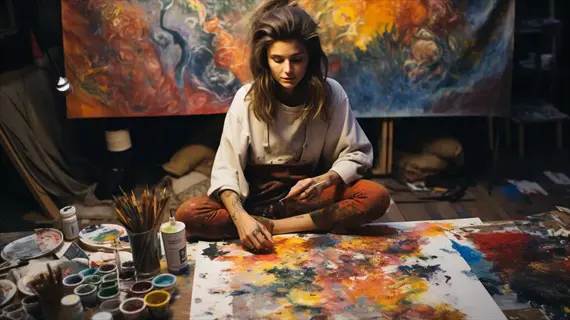
Flow State Activation
- Present-Moment Focus: Engages complete absorption in creative process diminishing external distractions and stressful thoughts effectively
- Time Distortion: Alters perception of time during immersive art-making experiences creating psychological space from daily pressures
- Intrinsic Motivation: Generates natural reward system through creative accomplishment and personal satisfaction independent of external validation
Metaphor Development
- Indirect Expression: Allows difficult emotions to surface through symbolic representation safely without direct confrontation that may trigger defenses
- Distance Creation: Provides psychological buffer when addressing challenging personal material through representational rather than literal expression
- Transformation Potential: Enables reworking personal narratives through artistic revision and reinterpretation of symbolic elements within creations
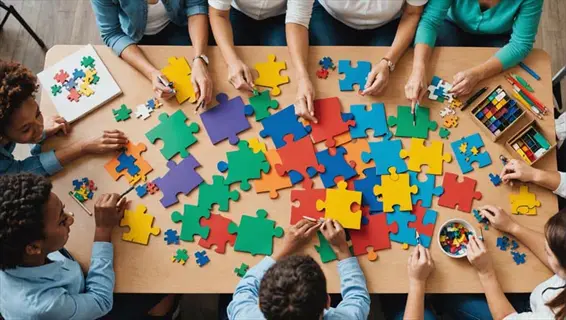
Relational Dynamics
- Social Mirroring: Group members gain valuable insights through observing others' creative processes and therapeutic approaches to similar challenges
- Non-Verbal Bonding: Shared creative space builds authentic connections without pressure of conversation or performance expectations among participants
- Community Validation: Collective art-making normalizes emotional experiences and reduces isolation through witnessing shared human struggles
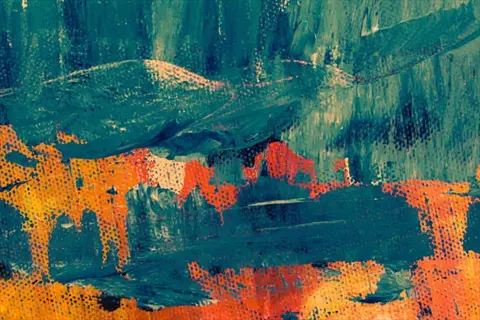
Progressive Disclosure
- Paced Exploration: Allows gradual emotional uncovering through layered artistic work that matches individual readiness for self-examination
- Control Maintenance: Client determines depth of emotional exploration through autonomous creative choices within therapeutic framework
- Integrative Processing: Combines cognitive understanding and emotional processing through reflective art-making that connects mind and body
Art Therapy Techniques
Art therapy techniques utilize creative means to promote healing, rather than focusing on the finished art products. Emotional mapping through drawing allows for externalization of feelings through lines and shading. Different emotional tonalities can be conveyed through different pencil pressures. Paper and pencil make this a straightforward technique that can be initiated immediately.
In sculpture, tactile processing converts abstract emotions into physical form. Manipulating clay allows you to make connections between sensation and feeling. In three dimensions, revolving objects can alter the point of view. I teach the clients to notice how the resistance of material reflects challenges they face in life. This increases self-knowledge through tactile exploration.
Collage creates perspective-shifting effects through rearrangement. Collage by combining cutouts to develop story ideas of identity. This provides a new perspective on things. I've seen clients re-frame their personal narratives this way. No artistic skills are necessary, just curiosity and scissors.
Each process follows the process-over-product philosophy. You will concentrate more on the emotional discoveries than the aesthetics. Digital art allows you to erase the marks safely, while photography lets you frame experiences differently. Choose media that are comfortable to you. Begin with familiar materials and let the process unfold naturally.
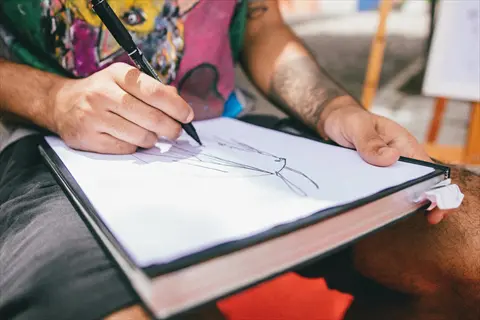
Drawing
- Emotional Mapping: Uses lines and shading techniques to externalize internal emotional states through deliberate pressure variations and thoughtful spatial organization across paper surfaces
- Accessibility Advantage: Requires minimal materials allowing immediate emotional expression anywhere with basic tools like pencils and readily available notebooks
- Therapeutic Application: Ideal for daily mood tracking through quick symbolic representations capturing complex feelings and evolving mental states effectively
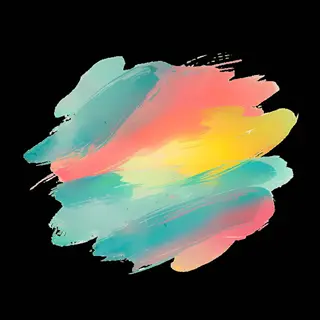
Painting
- Color Therapy: Leverages intentional hue selection and blending techniques to express emotions that resist verbal description through nuanced visual symbolism
- Fluid Expression: Water-based mediums enable spontaneous emotional release through flowing movements and organic color interactions on absorbent painting surfaces
- Sensory Engagement: Brush textures and pigment consistency provide tactile feedback connecting physical actions directly with emotional processing states
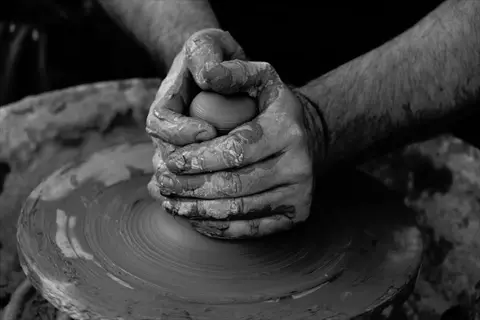
Sculpture
- Tactile Processing: Three-dimensional manipulation transforms abstract emotions into tangible forms through applied pressure and gradual shaping techniques with malleable materials
- Perspective Exploration: Physical rotation of created objects allows examining personal challenges from multiple angles both literally and metaphorically during sessions
- Transformation Symbolism: Malleable substances demonstrate potential for personal change through continuous reshaping and creative reworking of existing artistic forms
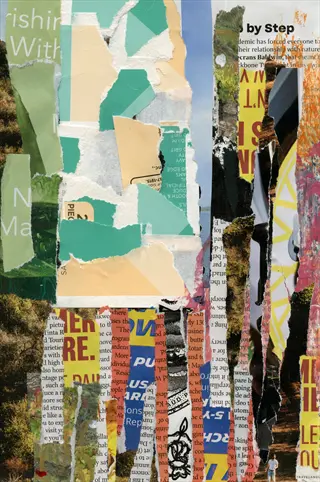
Collage
- Identity Exploration: Combines carefully selected found images and textures to construct visual narratives about evolving self-perception and future life possibilities
- Decision Practice: Curating and arranging diverse elements builds confidence through controlled creative choices and subsequent revisions during therapeutic sessions
- Metaphor Development: Juxtaposing unrelated images creates new meanings reflecting complex emotional landscapes and internal psychological conflicts
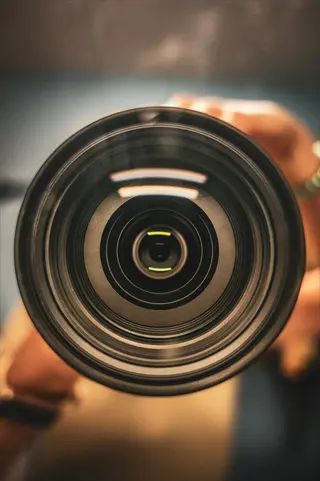
Photography
- Framing Therapy: Selective composition practices reframing perspectives on challenging situations through deliberate viewfinder limitation and creative angle choices
- Light Exploration: Manipulating exposure settings symbolizes finding clarity in emotional darkness through precise technical adjustments of lighting conditions and shadows
- Distance Technique: Objectifying experiences through lens creates psychological space for processing difficult emotions safely and gradually
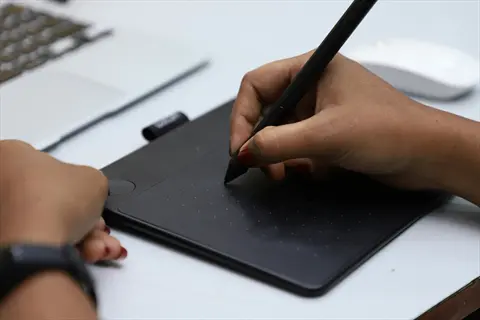
Digital Art
- Modern Accessibility: Layering capabilities and undo functions support risk-free experimentation with emotional expression in non-permanent digital creative environments
- Precision Options: Detailed editing tools enable nuanced expression of complex or conflicting feelings through gradual fine adjustments to evolving digital artwork
- Hybrid Approach: Blends traditional artistic techniques with contemporary technology for relevant therapeutic engagement across different generational preferences
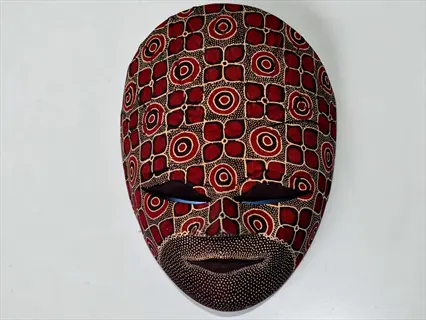
Mask Making
- Identity Exploration: Externalizes distinctions between public personas and private selves through symbolic surface decoration and meaningful structural design choices
- Projection Technique: Safely expresses socially-unacceptable feelings through representational symbols applied to wearable artistic creations during therapy sessions
- Role Examination: Creating distinct personas facilitates deeper understanding of various self-aspects and interpersonal relationship dynamics over time
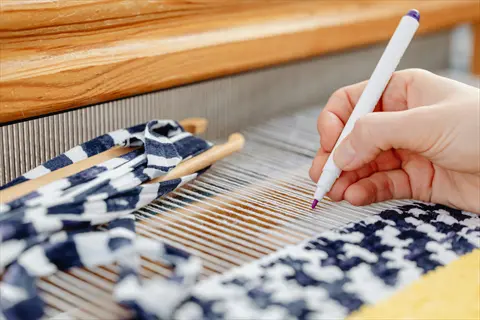
Textile Art
- Rhythmic Processing: Repetitive stitching or weaving actions induce meditative states that calm nervous system responses and reduce anxiety effectively
- Repair Symbolism: Visible mending techniques represent healing emotional wounds through tangible restoration work on fabric surfaces with careful stitching
- Tactile Comfort: Soft textile materials provide sensory reassurance during processing of difficult emotional content and challenging personal memories

Nature Art
- Grounding Practice: Combining natural elements connects therapeutic work with environmental awareness and present-moment mindfulness practices outdoors
- Ephemeral Acceptance: Creating impermanent installations teaches non-attachment and acceptance of inevitable life transitions and natural seasonal cycles
- Biophilic Connection: Organic materials enhance emotional wellbeing through innate human affinity for natural forms and biological patterns
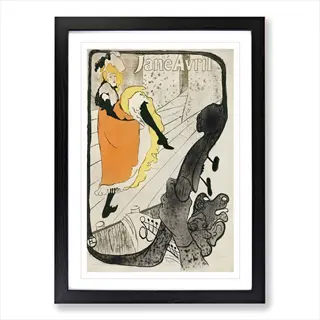
Movement Art
- Kinesthetic Expression: Transfers full-body movements to surfaces integrating physical sensations with emotional states through dynamic gesture tracing techniques
- Full-Body Engagement: Large-scale gestures activate proprioceptive awareness and facilitate emotional release through expansive motion sequences and stretches
- Energy Mapping: Translates physical dynamics into visual records of emotional intensity and psychological flow patterns throughout creative sessions
Daily Integration Methods
Integrating art therapy into your daily routine for 15 minutes is possible by simply using items you have at home. Begin each day with a check-in through the morning sketch. Use your non-dominant hand to doodle. This can help ideate your thoughts before they become blocked in your mind. This brief practice will help you express how you feel before starting your day. A notebook near your bed is a good idea.
Sensory props help you stay centered in mindfulness throughout the day. Rotate materials such as paper, sand, or clay for tactile exploration and sensory engagement. Notice how different materials affect your mood. I teach clients that they can stop and feel the material when stressed. This creates instantaneous grounding.
Evening gratitude doodling transforms our positive experiences into easy symbols. Draw little pictures or line drawings of daily pleasures before going to sleep. Put these where they will be seen each morning. I have found that my clients tend to experience improved sleep patterns after beginning this ritual. The power of repeated action is starting to tell and can be observed in their emotional tone as well.
These micro-practices create *cumulative benefits over time*. Engagement over time rewires your brain's stress reactions. Thus, these exercises foster emotional resilience without the long sessions. I have seen clients improve their well-being with these accessible daily practices. You can begin with simple things you already have at home.
Morning Emotion-Drawing
- Ritual Structure: Begin each day with 5-minute abstract sketching representing current emotional state using non-dominant hand
- Process Focus: Use basic notebook without judgment to capture feelings before cognitive filters activate
- Benefit Tracking: Review weekly sketches to identify emotional patterns and growth opportunities
Digital Detox Art Sessions
- Tech-Free Commitment: Schedule 15-minute sessions using tactile materials like clay or natural pigments without digital devices
- Sensory Reset: Focus exclusively on material textures and physical sensations during creation process
- Mindful Transition: Follow each session with 2-minute reflection on bodily awareness and mental clarity changes
Community Art Exchanges
- Shared Practice: Exchange weekly postcard-sized artworks with trusted partners depicting emotional themes
- Non-Verbal Dialogue: Respond to received art with new creations rather than written analysis
- Connection Building: Establish visual conversation exploring mutual support without verbal expectations
Sensory Material Exploration
- Texture Rotation: Alternate daily between smooth (paper), granular (sand), and pliable (clay) materials
- Emotional Mapping: Associate physical sensations with feelings through pressure and movement experimentation
- Awareness Development: Journal brief notes connecting material experiences with emotional states afterwards
Gratitude Doodling
- Evening Practice: Create small symbolic drawings representing daily positive experiences before bedtime
- Visual Anchoring: Place completed doodles where visible during morning routines as reminders
- Pattern Recognition: Monthly review reveals recurring positive themes and resilience sources
How Art Therapy Works
Art therapy physically stimulates the release of serotonin, leading to a natural improvement in mood during the process of being creative, related to the regulation of emotion and reduction of anxiety presented by this neurotransmitter. The creation of art activates the brain's reward system. I have seen clients expressing feelings of calm after only twenty minutes of creative concentration. The biological effects can be measured and are immediate.
New neural pathways develop when you solve artistic problems over and over. This strengthens connections between the brain's emotional and logical regions. Your mind becomes accustomed to flexible ways of thinking. Crafting in clay or drawing develops cerebral resilience. I help clients become aware of these subtle changes in perception.
Embodied cognition brings together physical actions with emotional processing. Sculpting or brush strokes allow feelings to be translated into movement. The hands do what words cannot express. I encourage you to pay attention to the sensations in your body during the art-making process. This can create a powerful integration of the mind and body, leading to holistic healing.
The therapeutic process moves from expression to insight. You first express emotions outwardly through materials. Reflection afterwards reveals personal patterns. Often, clients discover answers naturally during this process. Trust that meaning evolves when you engage with the creative flow regularly.
Neurochemical Activation
- Serotonin Release: Creative engagement triggers neurotransmitter production that improves mood regulation and reduces anxiety symptoms
- Prefrontal Stimulation: Artistic decision-making activates brain regions responsible for problem-solving and emotional management
- Cortisol Reduction: Flow states during art-making lower stress hormone levels measurable in blood samples
Neural Pathway Development
- Cognitive Flexibility: Regular art practice strengthens connections between logical and emotional brain centers
- Trauma Reprocessing: Non-verbal expression accesses implicit memories allowing safe emotional reprocessing
- Sensory Integration: Multimaterial engagement creates cross-brain connections enhancing whole-self awareness
Embodied Cognition
- Physical Metaphors: Manipulating materials provides tangible representations of abstract emotional experiences
- Kinesthetic Learning: Physical art-making translates emotional states into visible forms through movement
- Somatic Awareness: Texture interactions increase bodily consciousness of emotional responses
Emotional Translation
- Symbolic Expression: Complex feelings manifest as visual metaphors bypassing cognitive defenses
- Externalization Process: Internal experiences become external objects enabling objective examination
- Narrative Reconstruction: Art-making reorganizes chaotic emotions into coherent visual stories
Therapeutic Integration
- Insight Development: Therapist-guided reflection connects artistic choices to personal patterns
- Behavioral Translation: Artistic breakthroughs inform real-life coping strategy development
- Resilience Building: Creative problem-solving in art transfers to life challenge management
Core Art Therapy Benefits
Stress can be alleviated by regulating cortisol in the creative flow state. Creating art will measurably lower stress hormone levels in a matter of minutes. This biological alteration enables one to cope with everyday stresses more calmly. I teach clients the use of quick sketching for instant relief in overwhelming moments. This has a cumulative effect, enabling individuals to become more resilient to chronic stress.
Emotional resiliency is created through safe expressions of feeling in non-verbal ways. You build a tolerance for difficult feelings when you externalize them symbolically. Your ability to cope increases gradually. My clients report an increasing ability to handle conflict after regular engagement in art. The materials become allies in finding balance in feeling regulation.
Cognition-enhancing arises from the formation of neural pathways during creative solutions to problems. Making artistic choices activates the prefrontal cortex, making choices easier. These exercises in the head effortlessly transfer to real-life issues. I have observed that clients have acquired better concentration at work through their daily art rituals.
The ways these base benefits connect in practical usage, I I'm impressed with. Morning Emotion-drawing gives the day a tone, evening gratitude Exercise gives time a positivity. Also, simple habits can be worked for sustained well-being, weather tools are not available in the work. I have used, and would commend to others, the way the things can be made easily for purchase, or used without buying.
Stress Reduction
- Cortisol Regulation: Art-making induces flow states that measurably lower stress hormone levels within 30 minutes of practice
- Present-Moment Focus: Sensory immersion in materials disrupts rumination cycles and anxiety thought patterns effectively
- Nervous System Balance: Rhythmic creative actions activate parasympathetic response promoting physiological calm
Emotional Resilience
- Expression Safety: Non-verbal channels provide secure outlets for complex feelings without verbal vulnerability
- Tolerance Building: Gradual exposure to difficult emotions through symbolic representation increases coping capacity
- Self-Validation: Artistic choices reinforce personal agency and validate internal experiences authentically
Cognitive Enhancement
- Neural Plasticity: Creative problem-solving in art strengthens connections between prefrontal cortex and limbic system
- Memory Integration: Multisensory engagement encodes experiences through visual, tactile and kinesthetic pathways
- Focus Development: Sustained attention during creation builds concentration stamina transferable to daily tasks
Self-Esteem Building
- Mastery Evidence: Tangible art products provide concrete proof of capability and creative accomplishment
- Self-Discovery: Uncovering personal symbolism fosters authentic identity beyond societal expectations
- Value Reinforcement: Curating meaningful creations affirms personal worth and intrinsic value systems
Social Connection
- Non-Verbal Bonding: Shared creative space builds trust through parallel expression without conversation pressure
- Empathy Development: Witnessing others' artistic processes cultivates understanding of diverse emotional experiences
- Belonging Cultivation: Group art-making normalizes struggles and reduces isolation through shared humanity
5 Common Myths
Art therapy does not require artistic ability or skill in techniques
@There is no artistic talent necessary in art therapy due to the primary focus on the creative process and not the creation itself. Since therapeutic benefits are derived from self-expression and emotional exploration during the creation process, art therapy does not require artistic skill. The therapist emphasizes personal importance more than aesthetic quality. Therapists trained in art therapy assist their subjects in exploring non-threatening techniques, which is in no way related to the artistic ability of the persons being utilized in art therapy.
Art therapy is beneficial only to people with serious mental health issues or clinical diagnoses.
This modality is applicable anyone who seeks emotional well-being from the universal benefits of stress management, self-discovery and personal growth, not only clinical populations. Creative expression is a preventative form of mental health care for ordinary struggles and transitions of life and increases resilience in healthy neuro-typical people, therefore it is of value to the entire mental wellness spectrum.
Children receive a greater benefit from art therapy than adults do because of the spontaneity of their development and creativity
Art therapy is easily adaptable at all stages of life since adults also gain unique advantages from working non-verbally with complex emotions, occupational stressors, and identity crises. The older participants are capable of achieving more productive insight when it comes to symbolism, due to life experiences, from which the therapist can glean the necessary approaches through a working-with-the-needs-of-the-environment type of philosophy throughout childhood and later years without feeling limited by age.
Art therapy can take the place of medications or traditional talk therapy altogether
While art therapy has advantages in emotional processing, it often coexists rather than replaces other treatments through collaborative care plans directed by healthcare professionals. This integrative approach also attends to the biological, psychological and social aspects of well-being. Creative expression enhances rather than substitutes evidence based medical treatments.
Meaningful results of art therapy should be noticed right after the first session.
Therapy, like most types of psychotherapy, is gradual and progressive, and sessions build processes, since it is through sessions based on feelings of trust, symbols, a language of symbols and new understandings evolved into the therapeutic work that they can be used by patients in their ordinary lives. If lasting changes are to be produced there must be a constant relationship with the creative work which produces results through many sessions of work, rather than expecting sudden transformations of results from any isolated session.
Conclusion
Art therapy presents a genuine transformational possibility for your emotional well-being through regular creative practice. This approach works well for all ages, requiring no special skills. I have seen children and seniors discover new self-awareness. The trip begins where you are right now.
Artistic expression becomes your personal tool for a journey of personal growth through common objects. Draw with a pencil, mold with clay, arrange found things. Each of these acts lends emotional strength spontaneously. Your personal therapeutic journey is fostered naturally through a steady experience using simple objects at home.
To begin, set an alarm for five minutes to investigate the mark makers that you have available. Make a record of how your colors and textures affect your feelings. The path to deeper discovery of who you are lies at the ends of your mark-makers. Start today!
External Sources
Frequently Asked Questions
What are the primary benefits of art therapy?
Key benefits include emotional processing, stress reduction, and cognitive enhancement through creative expression. Additional advantages:
- Non-verbal channels access subconscious emotions safely
- Daily practice builds emotional resilience over time
- Sensory engagement regulates nervous system responses effectively
- Creative problem-solving transfers to real-life challenges
- Group sessions foster social connection and belonging
How does art therapy improve mental health?
Art therapy facilitates emotional processing through tangible creative actions that rewire neural pathways. Benefits include cortisol reduction during flow states, trauma reprocessing via symbolic expression, and development of coping strategies through metaphorical problem-solving in safe therapeutic environments.
What conditions can art therapy address?
This modality supports diverse conditions by accessing emotions non-verbally. Effective applications include:
- Anxiety and stress-related disorders
- Trauma processing and PTSD management
- Identity exploration during life transitions
- Emotional regulation challenges
- Social connection difficulties
Is artistic talent required for art therapy?
Art therapy focuses exclusively on process over product, making technical skill irrelevant. Therapeutic value comes from emotional exploration during creation, not aesthetic outcomes. Trained therapists guide participants using universally accessible techniques regardless of prior experience or perceived ability.
How quickly does art therapy show results?
Progress manifests gradually through consistent sessions as participants develop symbolic language. Unlike quick fixes, sustainable change requires building trust, integrating insights into daily life, and cumulative emotional processing. Most notice initial benefits within several weeks of regular practice.
What age groups benefit from art therapy?
Creative healing adapts across all life stages. Children process emotions through play-based creation, adults address complex stressors via symbolic expression, and seniors explore life narratives. Therapists tailor approaches to developmental needs without age restrictions.
How does art therapy affect the brain?
Creative engagement triggers measurable neurochemical changes including serotonin release for mood regulation. Additional effects include prefrontal cortex stimulation enhancing decision-making, neural pathway development connecting emotional/logical centers, and cortisol reduction during immersive flow states.
What are common misconceptions about art therapy?
Key misunderstandings include believing it requires talent, serves only clinical populations, or replaces traditional treatments. Reality emphasizes universal accessibility through process-focused methods that complement other therapies for holistic wellbeing.
Can art therapy replace medication?
While effective for emotional processing, art therapy typically complements rather than replaces medical treatment. It enhances traditional approaches through integrated care plans addressing psychological dimensions while respecting biological interventions' necessity.
What daily practices support therapeutic benefits?
Consistent micro-sessions reinforce gains through accessible techniques. Effective routines include:
- Morning emotion-drawing with non-dominant hand
- Gratitude doodling before bedtime
- Digital detox art sessions
- Texture exploration rotations
- Postcard-sized art exchanges
